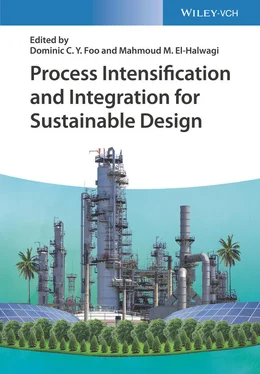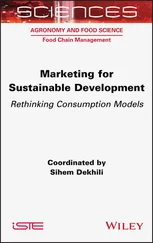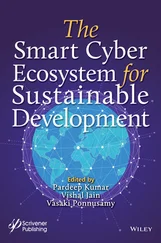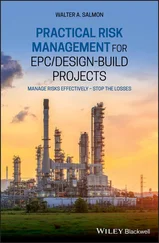196 195
197 196
198 197
199 198
200 199
201 200
202 201
203 202
204 203
205 204
206 205
207 206
208 207
209 208
210 209
211 210
212 211
213 212
214 213
215 214
216 215
217 216
218 217
219 218
220 219
221 220
222 221
223 222
224 223
225 224
226 225
227 226
228 227
229 228
230 229
231 230
232 231
233 232
234 233
235 234
236 235
237 236
238 237
239 238
240 239
241 240
242 241
243 242
244 243
245 244
246 245
247 246
248 247
249 248
250 249
251 250
252 251
253 252
254 253
255 254
256 255
257 256
258 257
259 258
260 259
261 261
262 262
263 263
264 264
265 265
266 266
267 267
268 268
269 269
270 270
271 271
272 272
273 273
274 274
275 275
276 276
277 277
278 278
279 279
280 280
281 281
282 282
283 283
284 285
285 286
286 287
287 288
288 289
289 290
290 291
291 292
292 293
293 294
294 295
295 296
296 297
297 298
298 299
299 300
300 301
301 302
302 303
303 304
304 305
305 306
306 307
307 308
308 309
309 310
310 311
311 312
312 313
313 314
314 315
315 316
316 317
317 318
318 319
319 320
320 321
321 322
322 323
323 324
324 325
325 326
326 327
Process Intensification and Integration for Sustainable Design
Edited by Dominic C. Y. Foo MahmoudM. El-Halwagi

Editors
Dominic C. Y. Foo
University of Nottingham Malaysia
Department of Chemical and
Environmental Engineering
Broga Road
43500 Semenyih, Selangor
Malaysia
Mahmoud M. El‐Halwagi
Texas A&M University
Department of Chemical Engineering
3122 TAMU Room 200
TX
United States
All books published by Wiley‐VCHare carefully produced. Nevertheless, authors, editors, and publisher do not warrant the information contained in these books, including this book, to be free of errors. Readers are advised to keep in mind that statements, data, illustrations, procedural details or other items may inadvertently be inaccurate.
Library of Congress Card No.:
applied for
British Library Cataloguing‐in‐Publication Data
A catalogue record for this book is available from the British Library.
Bibliographic information published by the Deutsche Nationalbibliothek
The Deutsche Nationalbibliothek lists this publication in the Deutsche Nationalbibliografie; detailed bibliographic data are available on the Internet at < http://dnb.d-nb.de>.
© 2021 WILEY‐VCH GmbH, Boschstr. 12, 69469 Weinheim, Germany
All rights reserved (including those of translation into other languages). No part of this book may be reproduced in any form – by photoprinting, microfilm, or any other means – nor transmitted or translated into a machine language without written permission from the publishers. Registered names, trademarks, etc. used in this book, even when not specifically marked as such, are not to be considered unprotected by law.
Print ISBN:978‐3‐527‐34547‐2
ePDF ISBN:978‐3‐527‐81870‐9
ePub ISBN:978‐3‐527‐81872‐3
oBook ISBN:978‐3‐527‐81873‐0
Cover DesignAdam-Design, Weinheim, Germany
Dominic C. Y. Foo would like to dedicate this book to his wife Cecilia and kids Irene, Jessica, and Helena. Mahmoud M. El‐Halwagi would like to dedicate this book to his parents, his wife Amal, and sons Omar and Ali.
The chemical process industry involves a broad spectrum of manufacturing sectors and facilities around the world. With increased global competition, escalating environmental concerns, dwindling energy, and material resources, it is imperative for industry to seek continuous process improvement. Process intensification and integration are among the most effective strategies leading to improved process designs and operations with enhancement in cost effectiveness, resource conservation, efficiency, safety, and sustainability. Process integration is a holistic framework for designing and operating industrial facilities with an overarching focus on the interconnected nature of the various pieces of equipment, mass, energy, and functionalities. On the other hand, process intensification involves efficiency improvement through effective strategies such as increasing throughput for the same physical size or decreasing the physical size for the same throughput, coupling units and phenomena, enhancing mass and energy utilization, and mitigating environmental impact. There is a natural synergism between process integration and intensification. For instance, mass and energy integration (two key pillars of process integration) are ideal approaches for enhancing mass and energy intensities.
This book is intended to provide a compilation of the various recent developments in the fields of process intensification and process integration with focus on enhancing sustainability of the chemical processes and products. It includes state‐of‐the‐art contributions by world‐renowned leaders in process intensification and integration. It strikes a balance between fundamental techniques and industrial applications. Both academic researchers and industrial practitioners will be able to use this book as a guide to optimize their respective plants and processes.
The 14 chapters in the book are classified into two broad areas: process intensification and process integration. As expected, several intensification chapters include integration and vice versa. These chapters may be read independently of each other, or with no particular sequence. Synopses of all chapters are given as follows.
Section 1 – Process Intensification
The first section of the book consists of six chapters focusing on process intensification. Chapters 1 and 2 focus on process intensification for the shale gas industry. Chapter 1entitled “Shale Gas as an Option for the Production of Chemicals and Challenges for Process Intensification” (by Ortiz‐Espinoza and Jiménez‐Gutiérrez ) discusses alternatives to produce chemicals from shale gas, and opportunities for process intensification. In Chapter 2entitled “Design and Techno‐Economic Analysis of Separation Units to Handle Feedstock Variability in Shale Gas Treatment” (by Bohac and coworkers ), a systematic approach is proposed for the design of a processing plant to treat raw shale gas with variable composition. Chapters 3– 5focuses on various process intensification aspect of membrane separation processes. In Chapter 3entitled “Sustainable Design and Model‐Based Optimization of Hybrid RO–PRO Desalination Process” (by Lu and coworkers ), a dimensionless model‐based optimization approach was developed to evaluate the performance of a hybrid systems consisting of reverse osmosis and pressure retarded osmosis processes. In Chapter 4, entitled “Techno‐Economic and Environmental Assessment of Ultrathin Polysulfone Membranes for Oxygen‐Enriched Combustion” (by Lock and coworkers ), multiscale simulation was used for techno‐economic feasibility study of ultrathin polysulfone membrane for oxygen‐enriched combustion; the multiscale simulation covers molecular scale, mesoscale, and eventually process optimization and design. Chapter 5, entitled “Process Intensification of Membrane‐Based Systems for Water, Energy, and Environment Applications” (by Md Nordin and coworkers ), outlined three important applications of membrane technology in process intensification, i.e. membrane electrocoagulation flocculation for dye removal, membrane diffuser in photobioreactor, and forward osmosis/electrolysis. Chapter 6, entitled “Design of Internally Heat‐Integrated Distillation Column (HIDiC)” (by Harvindran and Foo ), discussed the use of process simulation software for the design of an internal HIDiC.
Читать дальше













